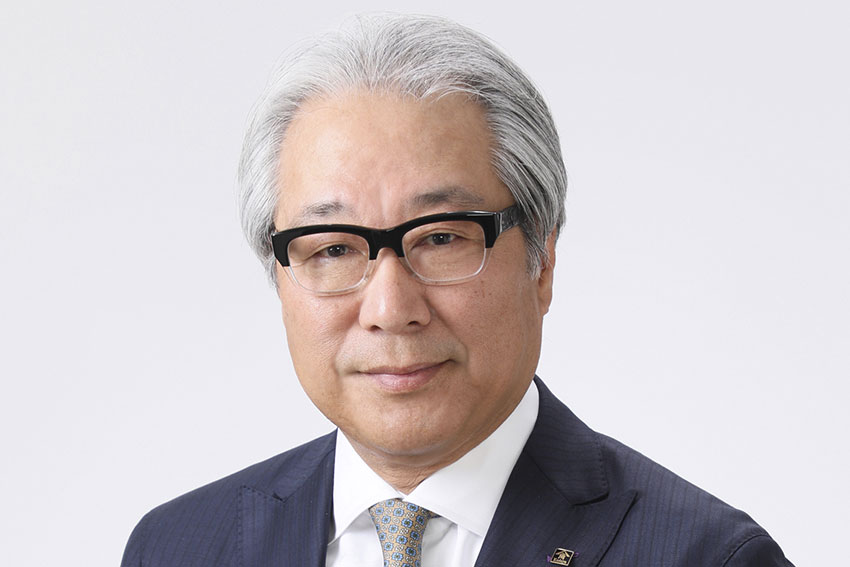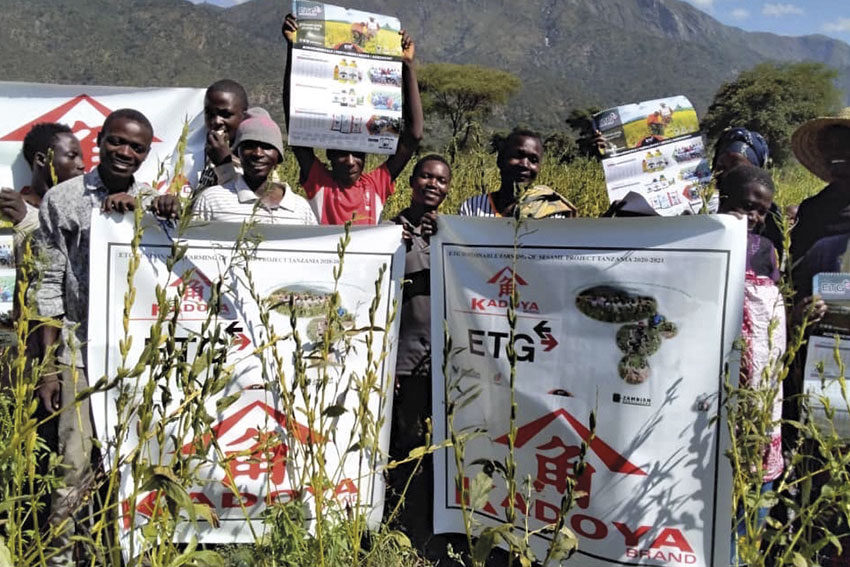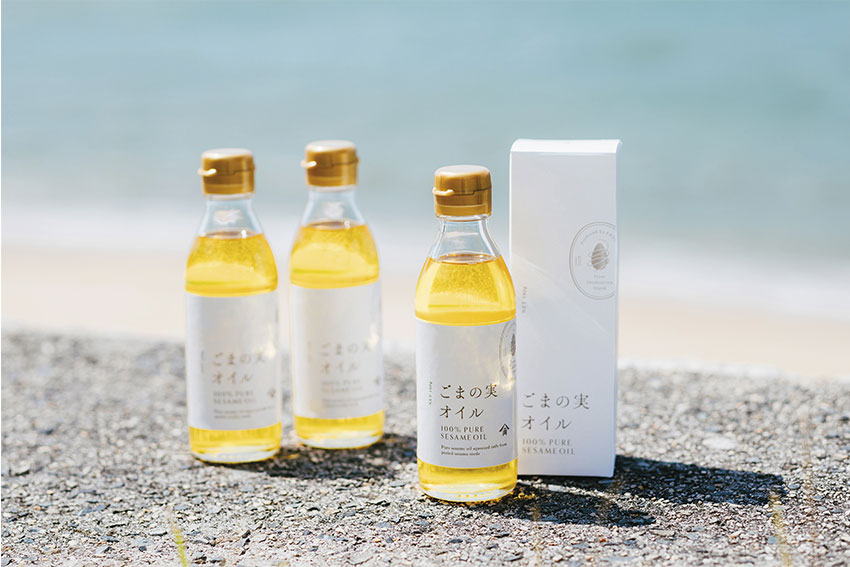With over 165 years of tradition, Kadoya Sesame Mills combines innovation, global partnerships and cultural adaptation to bring authentic, health-conscious sesame oil to new markets worldwide.

The Japanese food sector has recently experienced record numbers of food-related exports, reaching a height of JPY 1.45 trillion in 2023. Japanese sesame oil has been a part of this. If you look at the values in October 2023, Japanese sesame oil exports hit a 36% increase, with export volumes surging by 42% in September 2023. February 2023 also saw remarkable growth with a 101% month-on-month rise in export volume while export value increased by 122%. How do you account for these record-breaking levels of Japanese food exports and the growth in popularity of Japanese cuisine these past years? How can Japanese edible oil food manufacturers tap into this?
During Pre-COVID, exports to the US were significant but later experienced a steep decline due to the pandemic. However, since 2023, there has been a trend of resurgence, as reflected in recent data. Overall, Japanese food exports are indeed growing, driven by the increasing number of inbound tourists to Japan. There are approximately 20,000 Japanese restaurants in the US. While there has been some recent growth, a substantial increase in the number of Japanese restaurants in the US market has yet to be seen, despite the popularity of Japanese food. The rising demand for sesame oil is attributed to growing health awareness, with people opting for healthier, plant-based oils. Additionally, in regions where the standard of living is improving, more wealthy families are becoming health-conscious and choosing plant-based oils, not limited to North America.
In Europe, Japanese food gained popularity after being featured at the Milan Expo in 2015. While health consciousness drives demand for Japanese food in the US, Europe’s interest lies in discovering new flavors. French, Italian, and Spanish consumers might be particularly drawn to the unique taste of sesame oil. Meanwhile, the Asian market exhibits the highest growth in Japanese cuisine and restaurants.
Previously, tourists from mainland China comprised the largest group of overseas visitors to Japan. However, the focus has shifted to Southeast Asia, Australia, and the Pacific region. Many tourists from Indonesia, Singapore, Malaysia, and neighboring countries visit Japan for sightseeing and Japanese cuisine. For example, Indonesia with over 270 million people, has a growing number of wealthy individuals who prioritize quality over price. This expanding range of buyers in Asia has significantly boosted demand for Japanese food. Globally, these factors have contributed to the increasing popularity of Japanese food exports in the US, Europe, and Asia.
What strategies are you implementing to benefit from this growth and which countries do you see as having the most growth potential going forward?
Around 90% of our exported products go to the US and Canada. We began exporting to the US more than 50 years ago, serving households, businesses, restaurants, and as processing ingredients. The US population is growing, including the Asian segment. We see both short-term and medium-to-long-term growth in the US market and are focusing on our resources there. All of our sesame oil exports to the US carry the kosher certification. While halal food demand in the US is limited, there is significant demand for kosher products. Our halal products are primarily targeted at the Asian market, especially at Indonesia, where there is a large Muslim population. We aim to further penetrate this market with our halal sesame oil.
The US does not have a sesame oil producer, which creating significant business opportunities for us. In contrast, many Asian countries have their own sesame oil companies. We position our products as high-end sesame oil, and as the wealthy population in Asian nations grows, we see promising business opportunities in the future.
Your company acquired kosher certification in 2012 and halal certification in 2017. You just mentioned that you want to grow your halal market going forward. What strategies are you utilizing to make your halal and kosher products more accessible globally, and can you share with our readers the added benefits of halal and kosher foods?
Acquiring halal and kosher certification was part of our expansion to accommodate a wider range of preferences. We have been broadening our product lineup and obtaining these certifications. Previously, we did not emphasize the halal and kosher aspects in our promotions. However, in the future, a marketing strategy centered around halal may prove effective. Ultimately, everything comes down to product quality and taste. Providing the highest quality sesame oil remains our sole mission. Our strategy varies by country; in Singapore, we provide our oil for a private brand that has halal certification, whereas in Malaysia, halal certification is an absolute necessity. We also provide our national brand to Singapore and Malaysia, but it lacks halal certification.
COVID-19 has changed many things in our lives, including how we shop. In the years since the COVID-19 pandemic, Japan has become the fourth-largest E-commerce market in the world, with many Japanese companies trying to tap into this. Your company has embraced this shift with your online shop, which features traditional sesame offerings, some of which we found remarkably interesting, such as your Sesalis Moisture Gel Cream. What strategies are you using to build your E-commerce, and is the Sesalis Moisture Gel Cream the beginning of a new business segment for your company?
There were two reasons for establishing our e-commerce business. The first was to create a new sales channel, particularly during COVID-19, to make our products more accessible for household and business use. We launched a sales channel on Amazon, allowing the wider public to purchase our products online. The second reason was the need to offer new and unique products to differentiate ourselves from competitors. This approach is more aligned with a B2C business model, as we actively listen to customer needs and provide products that promote health and well-being.
Our Sesalis Moisture Gel Cream is one of our newly developed offerings. Additionally, we provide a special high-end sesame oil priced at JPY 2,500, available exclusively through our online website. We have also extracted sesamin essence to create a unique health supplement. Overall, our strategy focuses on delivering health value to our customers by offering innovative products that address unmet market needs. These products may range from high-end food specialties to items in sectors beyond food, such as cosmetics.

We would like to ask you more about your healthy sesame oil. At 196g, SUKOYAKA Sesame Oil is enriched with sesamin and sesamolin, natural compounds that are known for their health benefits. How is this product a healthier alternative when compared to other sesame oils?
Our healthy sesame oil is certified as FOSHU (Food for Specified Health Uses). It is carefully formulated to support the lowering of LDL cholesterol levels.
You mentioned earlier that would focus on the American market as the main target. Regarding the Southeast Asian region, you mentioned that each country has its own sesame oil companies. What makes your sesame oil unique? What makes your products different from those of your competitors?
Our biggest strength lies in our ‘Made in Japan’ quality. With over 160 years of accumulated history, we have crafted a distinctive Kadoya taste and aroma that sets us apart from competitors in the Asian market. However, this alone is not enough for our company to grow. It is essential to offer our products not only through the promotion of Japanese cuisine but also by adapting our sesame oil to local cuisines. Understanding the locality, culture, and cuisine is crucial for tailoring our products to each market.
In Europe and North America, people usually use olive oil when cooking. However, in Asia, sesame oil is well-known for cooking. What are the main differences, and why should someone cook with sesame instead of olive oil?
This is a challenge we are tackling right now, requiring a long-term vision. Some of the attempts we are considering include creating new recipes and adapting our sesame oil to local cuisines. Our goal is to make sesame oil a part of people’s daily lives. For example, we plan to hold demonstrations in supermarkets so customers can flavor, enjoy, and learn more about sesame oil before purchasing it. Additionally, we are considering a tie-up with an American culinary school to focus on Western cuisine. This would help more chefs feel comfortable incorporating sesame oil into Western dishes. While it may vary for people in the West, when Asian people smell sesame oil, it often triggers hunger. We hope the aroma will universally evoke feelings of hunger.
Kadoya Sesame Mills offers a diverse range of sesame-based products, and you specialize in sesame seed oils, including the traditional hot sesame oil for culinary use. In addition, you have your edible sesame seeds and sesame seed meals that cater to the consumer and professional market with versatile ingredients. Which of your products has the greatest potential for market growth, and do you have any new products you might be releasing?
We are a sesame oil manufacturer offering a variety of aroma grades. Determining which type of sesame oil has the highest growth potential is challenging, as it largely depends on consumer preferences. In the US market, we currently provide sesame oil with strong aromas. However, as we adapt to Western cuisine, sesame oil with mild aromas may have promising growth potential.
In Japan, inflation has made consumers more price-sensitive. Blended oils made from sesame and rapeseed are gaining popularity, allowing companies to reduce costs. This approach could be essential for us in developing new, market-suited products.
You mentioned before that the flavor is important for sesame oil as it grabs the people’s attention. Kadoya meticulously roasts sesame seeds to develop a unique fragrance and color, which preserves the essence that defines your sesame products. As a universal company that is known across the world, you must balance that tradition with your modern facilities to improve your efficiency. How are you able to balance tradition with the modern in your production process, and what synergies are you able to generate between the two?
Currently, our sesame oil is produced in our Shodoshima factory, where we have preserved our traditional craftsmanship for the past 160 years. However, with Japan’s declining population, we recognize the need to introduce cutting-edge technologies for mass production. Traditionally, we have relied on the expertise of our engineers and craftsmen. By quantifying the flavor, color, and taste, we aim to replicate the ideal product using advanced machinery. Guided by our research department, we strive to evolve by blending tradition with modern technology. This plan is still in its early stages but represents our vision for the future.
Which of your products is your favorite? If you had to recommend one product to people who are trying sesame oil for the first time, what would it be?
Gomanome Oil is our premier product, offering a unique alternative to olive oil. It is a completely new type of sesame oil, delivering a delightful combination of sweetness and nuttiness with every drop.

Is this only available in the domestic market, or is it also available in the overseas market?
Currently, it is only available in the domestic market.
We now know that your company exports mostly to the US and Canada, and that you are looking to further penetrate markets in Southeast Asia such as Indonesia. Looking towards the future, and already having such a strong market share in the US, what other markets are you looking to penetrate, and how will you do so? Will it involve M&As, establishing new factories, or finding new partners or distributors? What is your strategy for penetrating new markets?
The European and Asian markets remain largely untapped compared to the US market. We must first increase our product awareness in these regions, not only through Japanese agents but also by collaborating with local distributors and agents. Additionally, we plan to continue participating in exhibitions such as SIAL and Anuga. Stationing staff in the US, Asia and Europe is under consideration for the future. Last year, Otafuku dispatched a staff member to Paris which is a strategy that we may also consider adopting.
In the US market, where we have long-standing business, we recently started repacking processing locally. Previously, we dispatched sesame oil in drum cans, but we now ship it in larger containers and repackage it into drum cans in the US. By expanding packaging options, we can reach a wider range of customers and better cater to their needs locally.
As a company with over 160 years of history, what message would you like to convey to our global readers, and how would you like your brand to be seen in the eyes of the global market?
“Innovation and challenge” are the two keywords defining our company’s direction moving forward. We aim to create a food revolution. It is crucial to never to be satisfied with the present situation; we must continuously seek ways to improve and challenge ourselves. Our long-term vision is to be the number one in bringing health and smiles to people.
As for our brand message, we strive to make the world happy through sesame. One additional message I’d like to share with your readers is to try drizzling sesame oil over vanilla ice cream—it’s absolutely delicious. This unique combination is something we often recommend at our exhibitions.
For more information, please visit their website at: https://www.kadoya.com/
To read more about Kadoya Sesame Mills, check out this article about them
0 COMMENTS